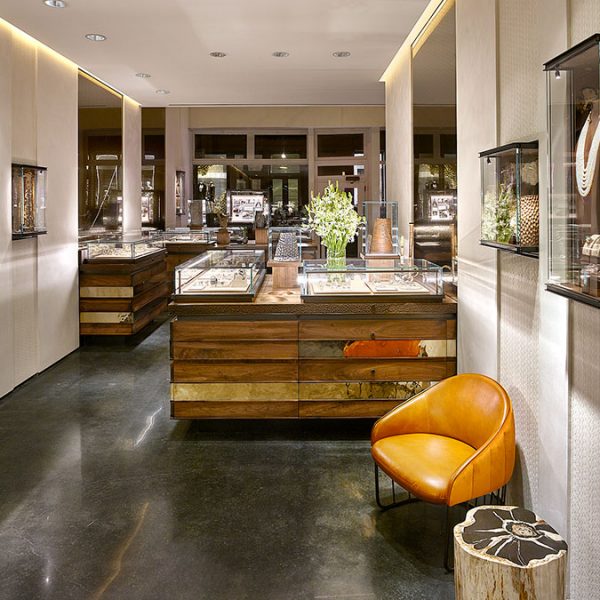
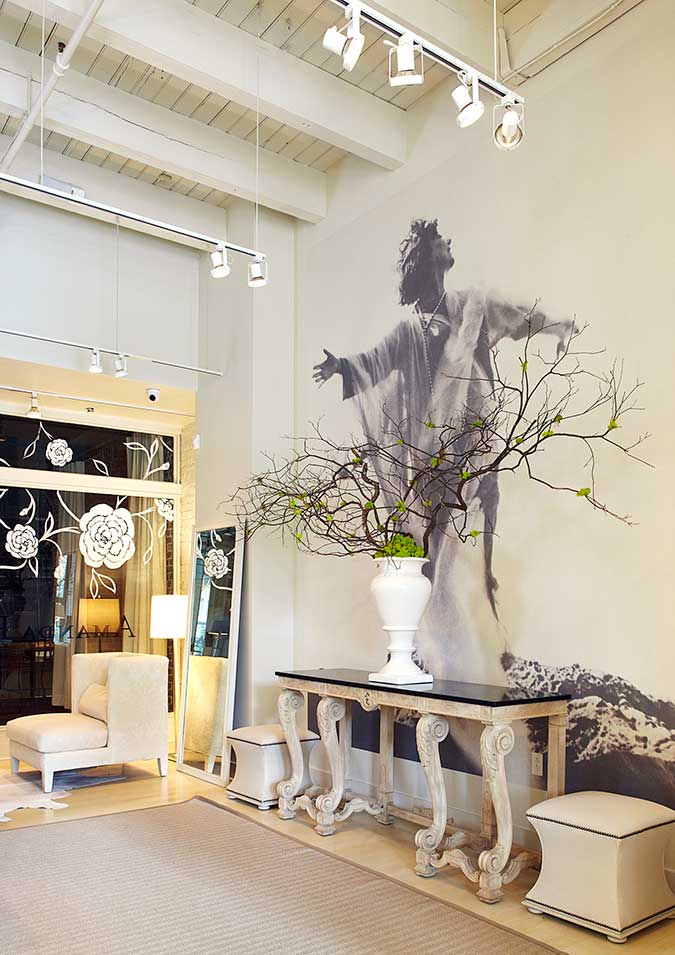 For fine jewelry retailers, managing the millions of small details that make a store a pleasant and efficient place to shop—things like greeting customers warmly and keeping cases streak-free—is as important as ever.
For fine jewelry retailers, managing the millions of small details that make a store a pleasant and efficient place to shop—things like greeting customers warmly and keeping cases streak-free—is as important as ever.
But in a rapidly consolidating U.S. retail environment that saw 1,269 jewelry businesses fold in 2016 and another 579 shutter in the first half of 2017, according to the Jewelers Board of Trade, ticking off the traditional boxes is no longer enough to guarantee that a store will thrive, or even survive.
Until recently, the fine jewelry industry was insulated from the challenges other consumer categories faced when e-commerce and mobile shopping began to encroach on their brick-and-mortar sales.
Jewelers were buffered by their products’ high price points; it took time for shoppers to feel comfortable buying $5,000 engagement rings and $2,000 sapphire earrings online.
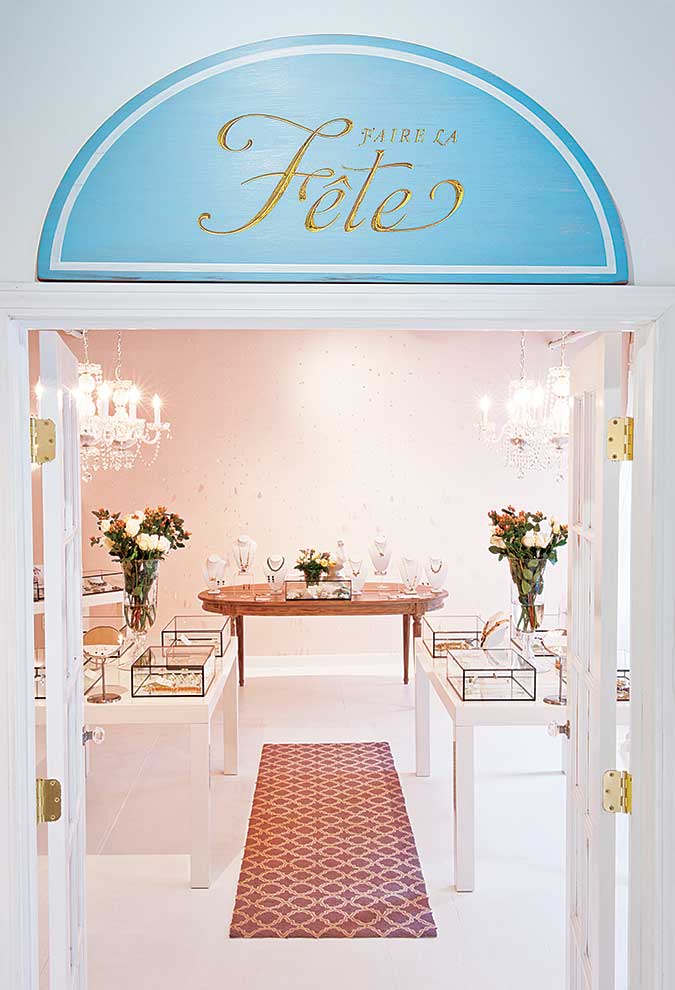 But now, in the age of free shipping and no-questions-asked returns, the idea of a price threshold preventing a shopper from buying anything online—be it a set of brass buttons or a sailboat—seems rather quaint.
But now, in the age of free shipping and no-questions-asked returns, the idea of a price threshold preventing a shopper from buying anything online—be it a set of brass buttons or a sailboat—seems rather quaint.
That said, shoppers are not abandoning brick-and-mortar. A study published by Retail Dive earlier this year reported that 62 percent of consumers still prefer to buy most products in stores.
We are, however, approaching a tipping point—a moment when shoppers spend more for goods online than they do in stores. E-commerce has grown by roughly $30 billion a year since 2010, according to the National Retail Federation, which predicted that online retail will grow eight to 12 percent this year—three times higher than the growth rate of the retail industry overall. Add to that competition the recent surge of secondhand luxury retailers into the market and the introduction of fine jewelry to the online fashion rental category (one new service, Flont, is backed by Net-a-Porter cofounder/investor Carmen Busquets and proposes to be the Rent the Runway of fine jewelry), and future prospects for traditional jewelry stores dim considerably.
 Jim Froeschle—a sales director and former top interior design executive for Stuller who works with roughly 130 high-performing independent jewelry retailers across the country—says many of his collaborators are resistant to making big changes, even when big changes are clearly required.
Jim Froeschle—a sales director and former top interior design executive for Stuller who works with roughly 130 high-performing independent jewelry retailers across the country—says many of his collaborators are resistant to making big changes, even when big changes are clearly required.
“To be competitive, you need to strip away all the old models of doing business and be open to change,” he says. “If you think about it, it’s the key to success in any era.” In most cases, change doesn’t require a 180-degree reversal, he adds. But nips and tucks may not be enough to buoy a business that’s already adrift. That’s why we asked a trio of professional problem solvers who work with jewelry retailers daily to weigh in on missteps they typically see and recommend bold moves proprietors can make to become (and remain) competitive.
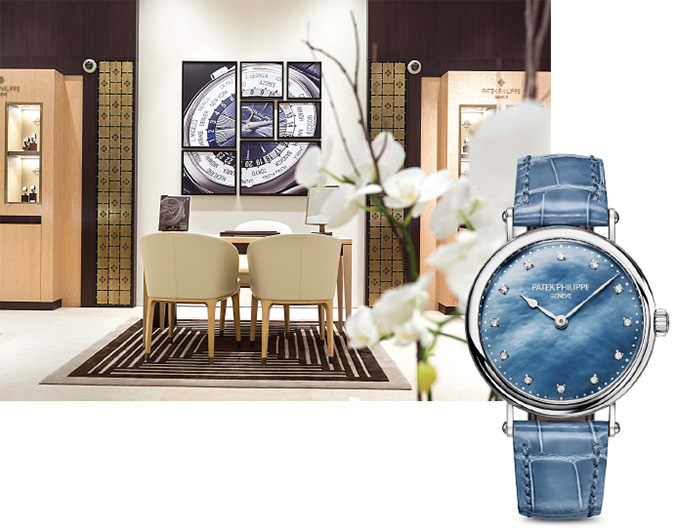
Ref. 7200/50G-011 Calatrava in 34.6 mm 18k white gold case with blue mother-of-pearl dial and diamond indexes; $29,845; Patek Philippe; 212-218-1240; patek.com
Environmental Impact
The advantages of shopping in a physical store could be distilled down to three elements: personalized, knowledgeable sales assistance; the ability to see and touch a wide range of products (ideally, the entire breadth of a company’s merchandise); and the pleasure of visiting a space that looks and feels modern, comfortable, and thoughtfully designed.
Many jewelry retailers excel in the first two areas. But too many are lacking in the third. Worn carpeting, tarnished brass accents, faded or outdated art or wallpaper: Such signs of wear and tear exist too often in independent jewelry stores, which are now competing with the pristine aesthetic experiences provided by bright and dynamic websites—not just the store a few blocks down.
“Basic things like color schemes are also important,” adds Froeschle. “If you haven’t painted in 10 or 15 years, paint your store! It’s time.” Even easier to fix is a store’s clutter quotient: “It drives me crazy when there’s too much clutter on the countertops—ads, signs for local charities, cheap jewelry.”
Studies show that consumers form their feelings about a store within the first nine seconds. Retailers who invest in updating their interiors will be poised to capitalize on those positive first impressions.
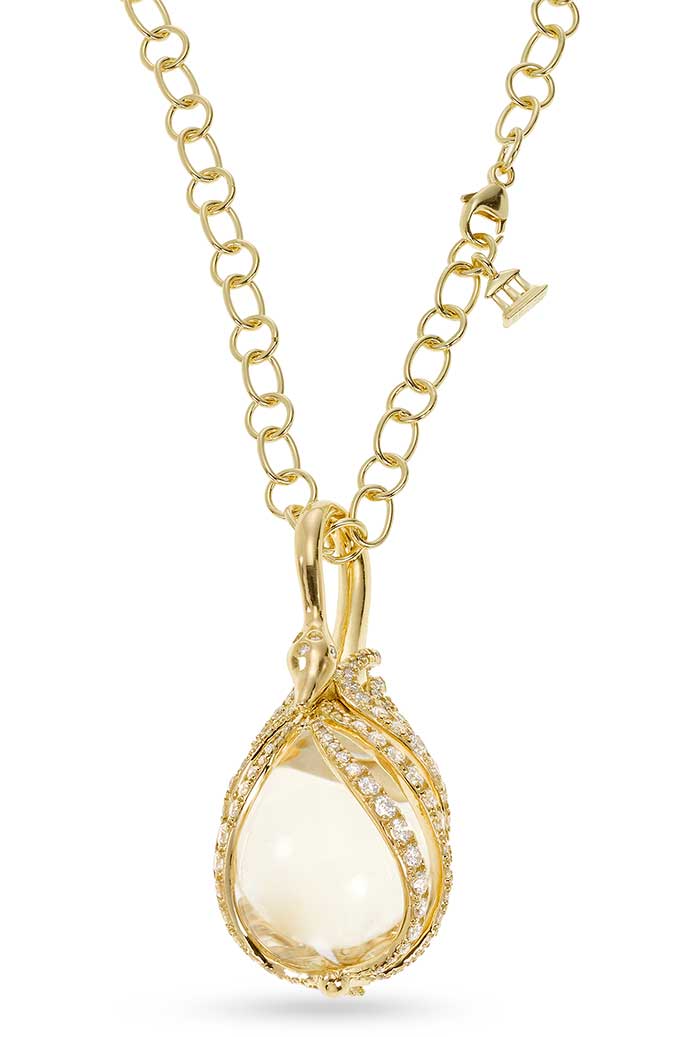
18k Swan Amulet with diamond pavé; $17,500; Temple St. Clair; 212-219-8664; templestclair.com
Tone Shift
Many jewelers tend to ignore a second type of store aesthetics: their dress code.
Very few industries in the U.S. require employees to wear suits and ties anymore, yet many jewelry stores maintain a suit-and-tie dress code. Such formality may be appropriate in a few markets. But there’s little room for it in modern retailing.
“Millennials are intimidated by suits and ties,” says Froeschle, who’s advised more than a few jewelers to trade their formal wear for business-casual attire. “They see the suit and they think they’re going to be hard-sold to.” Gen Z is just as uncomfortable with fancy getups, says Retail Doctor Bob Phibbs, in part because “they don’t value status in the same way baby boomers do.” Instituting a business-casual dress code that prizes trendy and creative styling (particularly with jewelry) can modernize a stodgy-feeling store overnight.
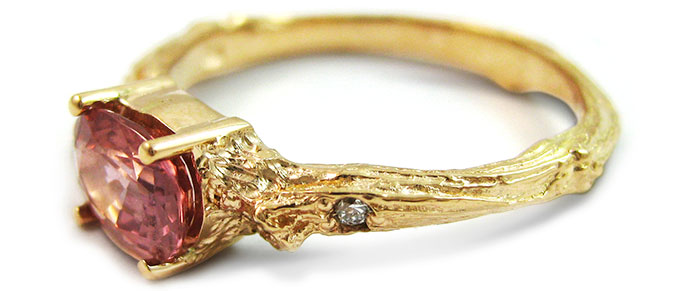
Twig ring in 18k yellow gold with 1.06 ct. padparadscha sapphire and 0.08 ct. t.w. diamonds; $4,340; K. Brunini Jewels; 858-259-8779; kbrunini.com
Tough Choices
However, no getup in the world can fix the problem Phibbs believes is all but eroding the industry from the inside out: apathetic salespeople.
He often advises store owners to lay off employees who’ve lost their drive to sell. Keeping low-performing employees on the payroll can have dire consequences for a small company.
“This market is putting people out of business,” Phibbs says. “If your salespeople are talking about Game of Thrones behind the counter all day and not viewing the next person who walks in as a chance to make another great sale, you’re in trouble.”
Phibbs says many retailers think of their long-term employees as family—which makes the prospect of laying them off all the more daunting.
“But a Bitter Betty will bring you down,” he says. “You go into so many jewelry stores and see the guy behind the counter with the Big Gulp cup that he thinks no one sees. These employees are no longer working, really.”
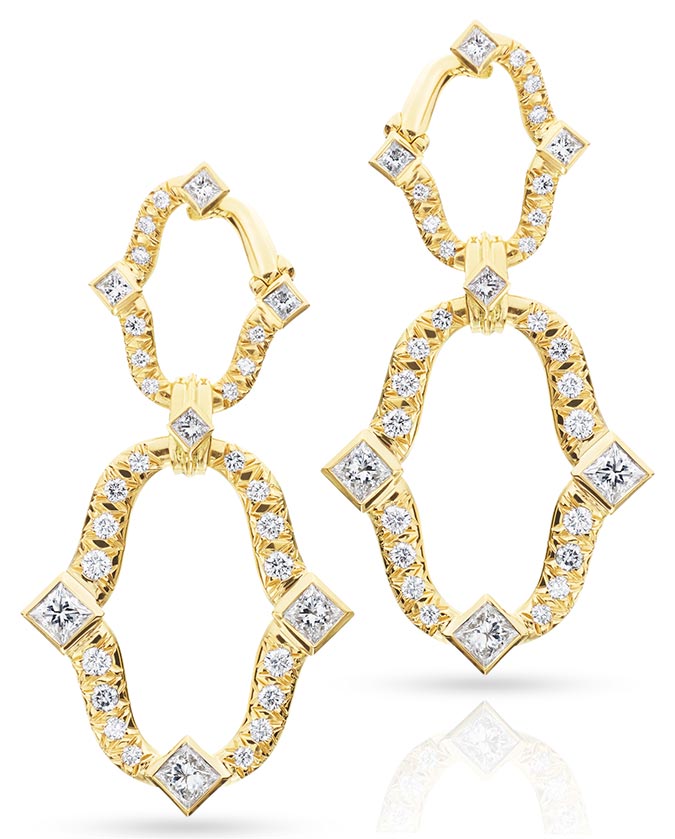
Secret Garden earrings in 18k yellow gold with 0.76 ct. t.w. round and 1.13 cts. t.w. princess diamonds; $9,000; Gumuchian; 212-593-9888; gumuchian.com
The Goods Stuff
Ann S. Arnold, chief strategy officer for the Buyers Intelligence Group (BIG), says the most common misstep she sees small jewelry retailers making is poor inventory management, both online and in-store.
“Customers have to know what they’re getting before they come in these days,” she explains. “Say I fall in love with a bracelet online, then I go to the shop and they don’t have it in the store. That’s a big problem. And it happens a lot.”
Arnold adds that aligning inventory doesn’t mean every bit of inventory has to be present and available on both channels; dynamic retail stores can and should have both in-store and online exclusives.
“You have to communicate with the consumer what the situation is,” Arnold says. “If it’s only available online, make sure they know that before they walk into your store planning to buy it.”
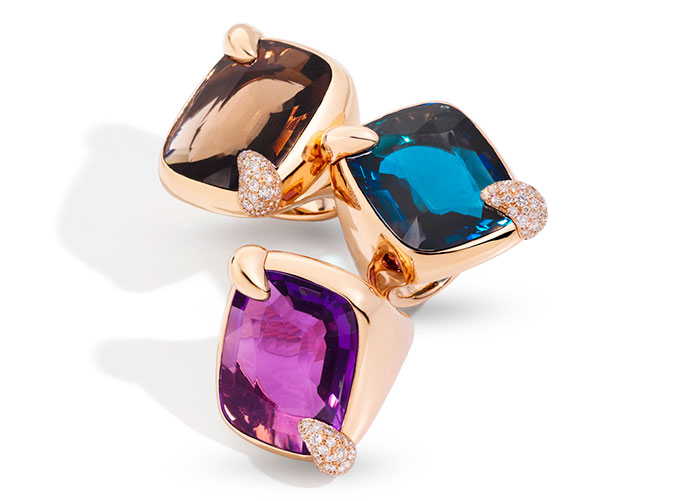
Ritratto rings with smoky quartz, London blue topaz, and amethyst and diamonds in 18k rose gold; $9,600–$12,100; Pomellato; 800-254-6020; pomellato.com
Smooth Operators
Many operational procedures specific to selling fine jewelry could be turning off potential consumers too.
Modern shoppers are quickly becoming acclimated to buying nearly all their products with a few finger-swipes on their smartphones—and may have little patience for some of jewelry retail’s standard procedures.
Phibbs asks retailers to consider (or reconsider) their locked front door, for starters. “Having to be buzzed, you’re already feeling judged by an employee who’s deeming you to be appropriate or not,” he says. “Then the guy’s behind the counter with his scrunchie of keys like he’s holding the keys to the kingdom.”
The experience strips consumers of their power—the power to browse product alone and even come and go as they please. And in modern, digitally driven retailing, the consumer shapes the buying experience, not the retailer.
“There is so much room in this industry for someone to punish their competitors,” says Phibbs. “And it all comes down to providing a great store experience.”
(From top) Stores to adore: John Hardy in New York City; Amanda Pinson Jewelry in Chattanooga, Tenn.; M. Flynn in Boston; Alchemy Jeweler in Portland, Ore.; Shreve & Co. in San Francisco
(Amanda Pinson: Jeff Herr; John Hardy: F. Oudeman; Alchemy: Lincoln Barbour; M. Flynn: Webb Chappell; Shreve & Co.: Drew Altizer)